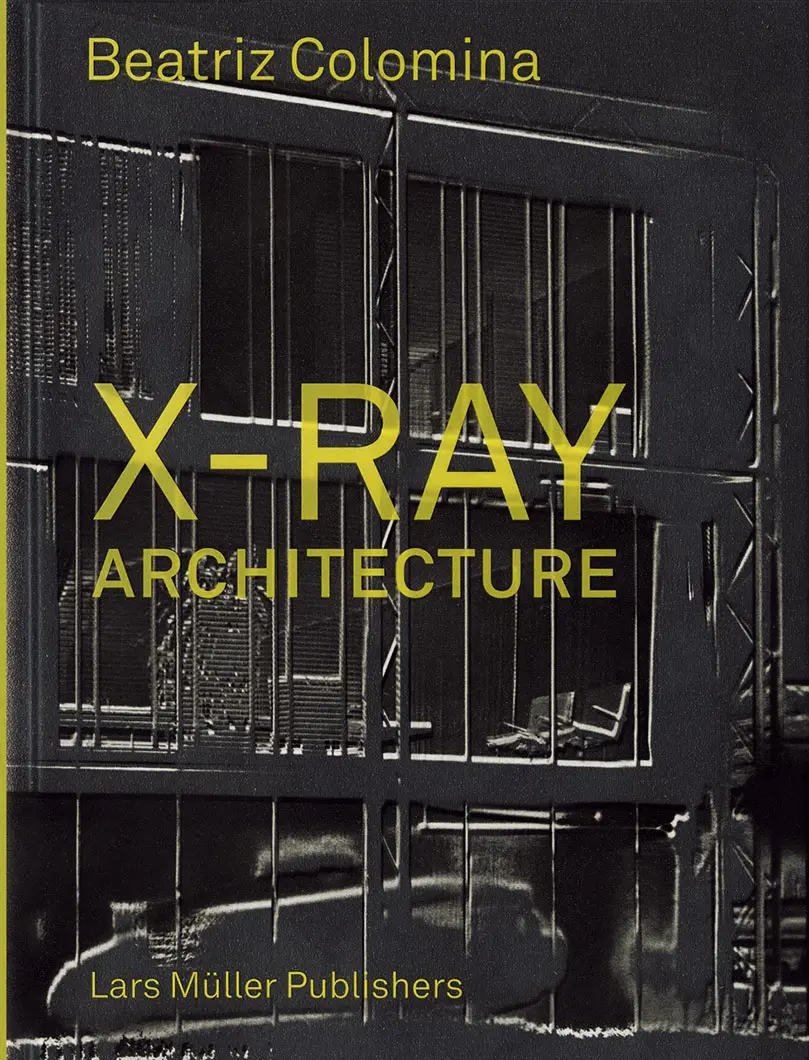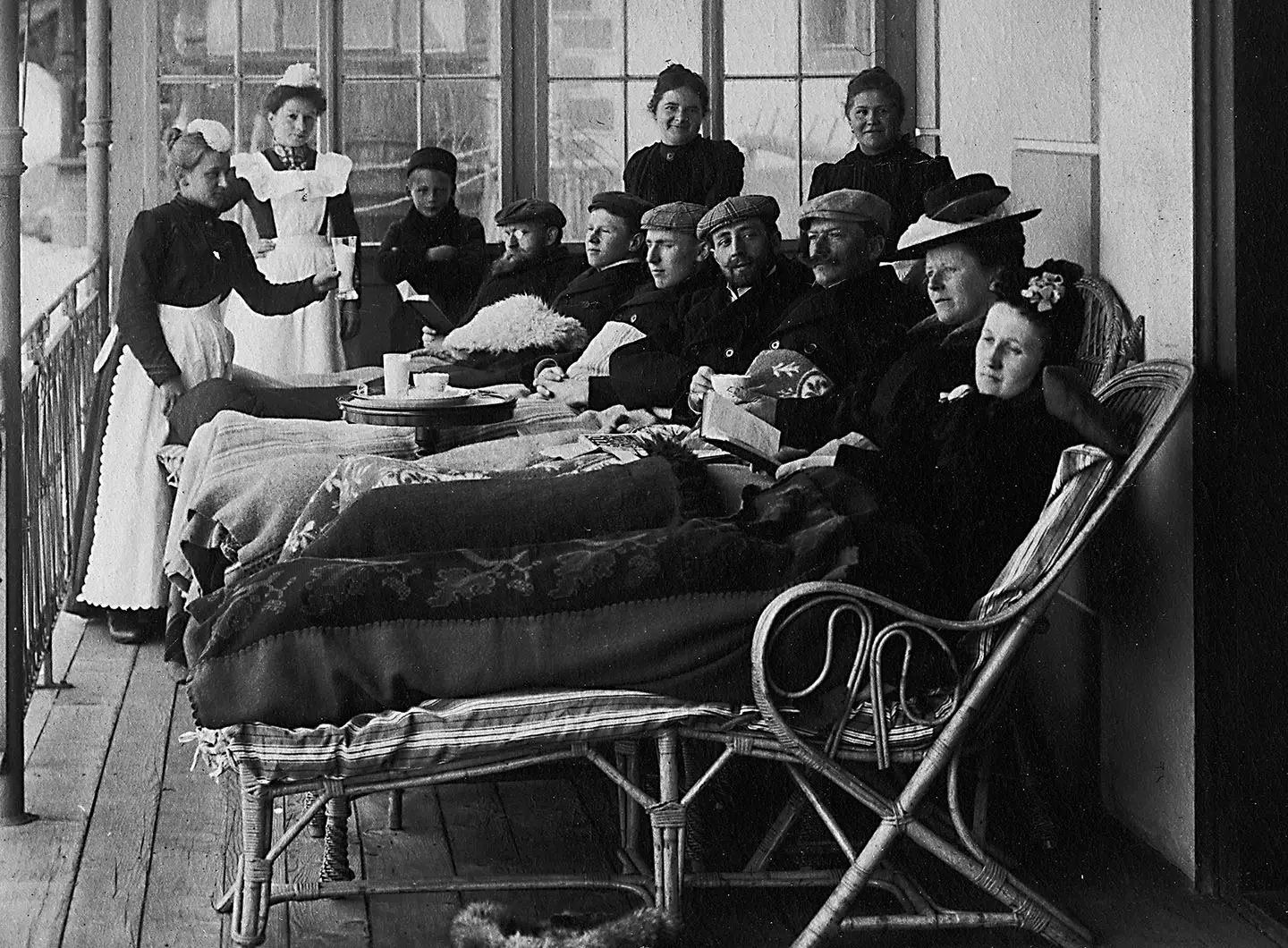“X-Ray Architecture”, architecture in relation to medical evolution

X-Ray-Architecture, Page 098 – Fig 067
Beatriz Colomina proposes a new reading of the Modern Movement in relation to the progress of medical science. A journey of discovery of the relationship between the human body and 20th century architecture, from the outbreak of tuberculosis to the invention of the X-ray
Beatriz Colomina is without doubt one of the leading architectural historians, theorists and curators of our time. A scintillating figure in the academic world, Colomina is the founding director of the Program in Media and Modernity at Princeton University, where she is also Professor of Architectural History and Director of Graduate Studies. Her books have been translated into more than 25 languages, and while they are all excellent, what stands out for me is the incredible archive work that went into Clip/Stamp/Fold, a book that brings together all the radical magazines published in the Sixties and Seventies around the world, published by Actar in 2010. Clip/Stamp/Fold is also the upshot of lengthy research, which was turned into a travelling exhibition in 2006, like others she has curated, such as Playboy Architecture (2012) and Radical Pedagogies (2014). Beatriz Colomina was also the lead curator of Curated by Vienna: The Century of the Bed, an exhibition involving a network of 22 art galleries in Vienna in 2014. More recently, she co-curated the third Istanbul Design Biennial (2016) on the theme Are We Human? The Design of the Species, and devised an installation on the theme of social media for the inaugural Seoul Biennale of Architecture and Urbanism, which opened in September 2017.

Beatriz Colomina
X-Ray Architecture, published by Lars Muller, came out in Spring 2018. The book explores the influence and impact of the world of medicine and its technological evolution on 20th century architectural design. The aim of X-Ray is to propose a new reading of modern architecture that will help us understand how the design of the facilities themselves was shaped by the arrival of tuberculosis and the ensuing key diagnostic tool – the X-Ray. The study of X-rays began just as the Modern Movement was in the process of being formed, and they evolved in parallel. While history has always focused on the functional character of the Modern Movement, which introduced the use of new materials such as glass, metal and reinforced concrete, X-Ray Architecture proposes a reading on an entirely new, as-yet unexplored level. In the book, the author underscores a common element to these two apparently distant themes, which is the ability to “cover” and “uncover,” while radiography showed what was going on inside the human body, the building concealed its interior, dramatically inverting the relationship between private and public. Moreover, one of the obsessions of 20th century architects (which lasted throughout the century) was to design buildings that would respond to the needs of people, like a sort of “medicine” with doors and windows to protect them both physically and mentally. Illness and treatment become the generating elements of the space, both internally and externally. Furthermore the issue of health was central during the Fascist era in Italy and, at the time, Mussolini had included in his political policy the planning of facilities that would respond to certain fundamental elements for people’s health, focusing in particular on children’s growth (the summer camps all over the Italian territory are an example of this).

X-Ray-Architecture, Page 127 – Fig 009
Beatriz Colomina traces the psychopathologies of 20th century architecture – from the trauma of tuberculosis to more recent disorders such as burn-out syndrome and ADHD – and investigates the diagnostic tools invented after X-rays and MRIs. While writing the book, she imagined herself as a patient living in the space, noting its potential and its criticalities, exploring the diseases triggered directly by the way in which we engage with architecture and cities, such as agoraphobia, claustrophobia, nervous disorders, fixations with hygiene and so on. Colomina introduces the subject to invite the reader to talk about the state of architecture today; suggesting that they look to illness and to the latest discoveries to trigger a journey of introspection and understand the way in which we conceive the discipline in our own time. In her Introduction she suggests that “Modernity has been guided by illness” and that the driver of the Movement was not that heroic, brilliant and functional concept that came to us, rather a languid and fragile body of issues bound up with the new forms and the new technologies. Modern architecture should be read in relation to the medical evolution of the time in order to understand its meaning, and it should be read not just in relation to medicine but also to biology, psychology and sexuality, in order to invite the reader to understand the meaning of this book.
Title: X-Ray Architecture
Author: Beatriz Colomina
Design: Integral Lars Müller
Published by: Lars Müller
Published: 2019
Pages: 200
Language: English























